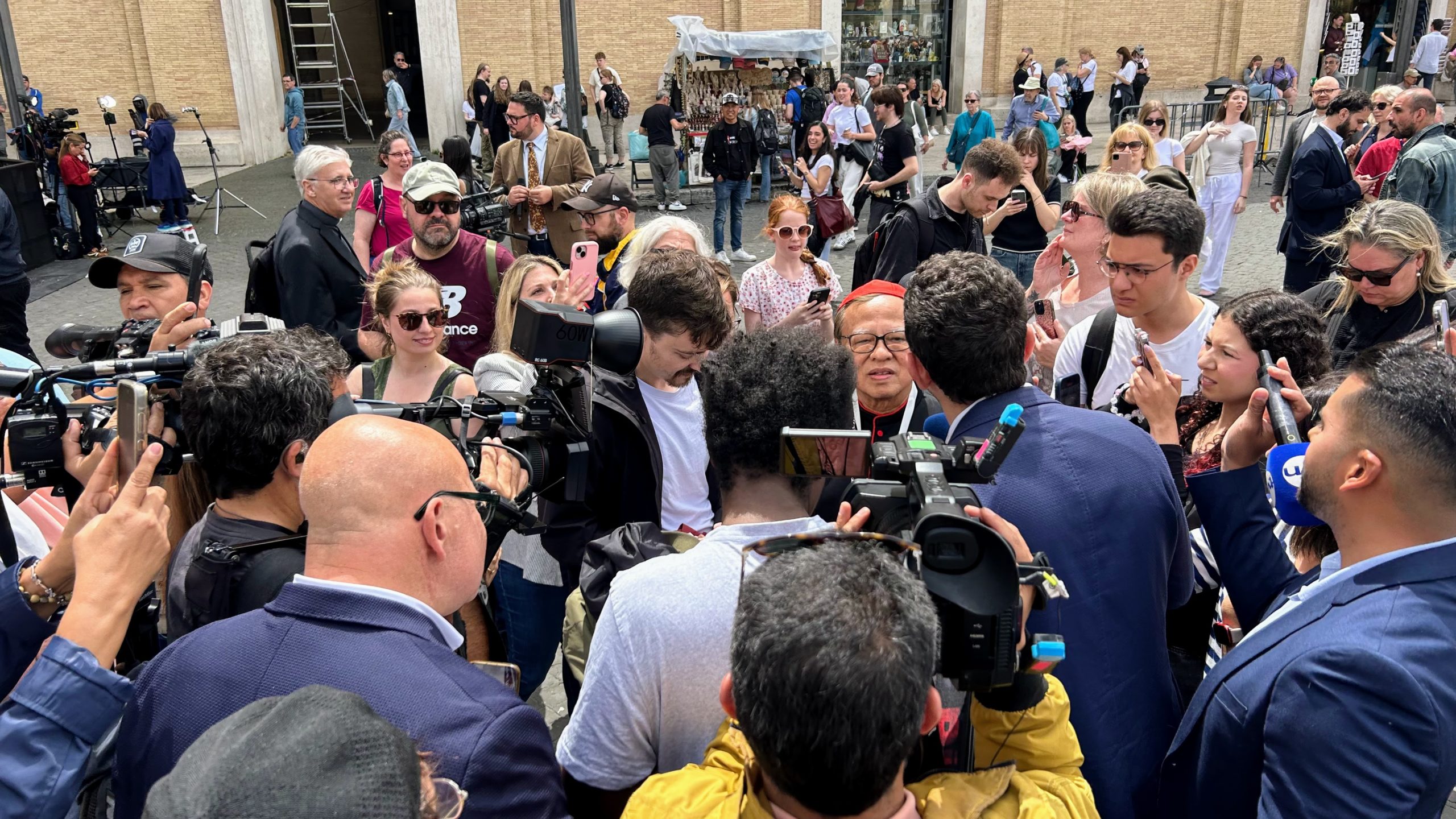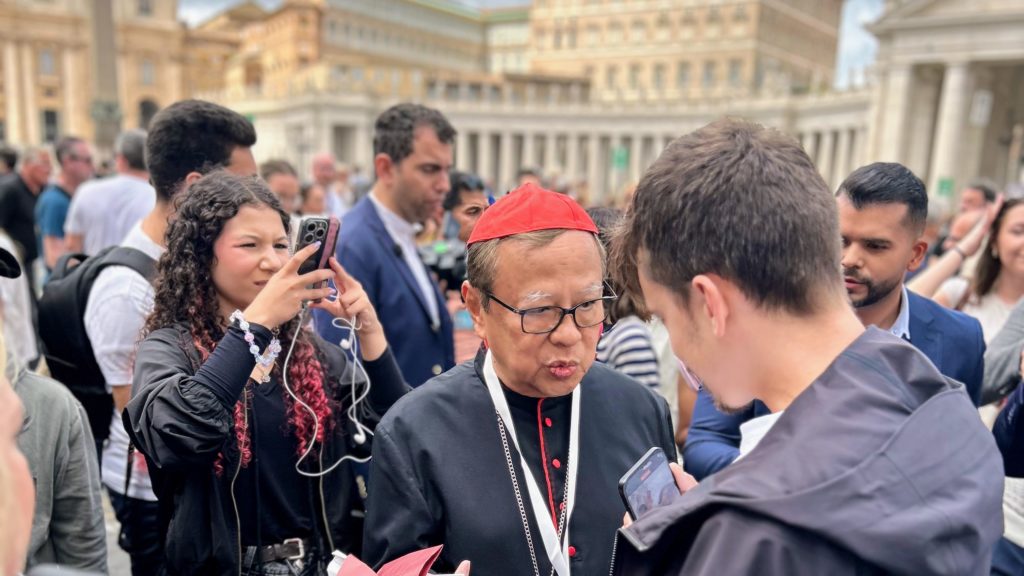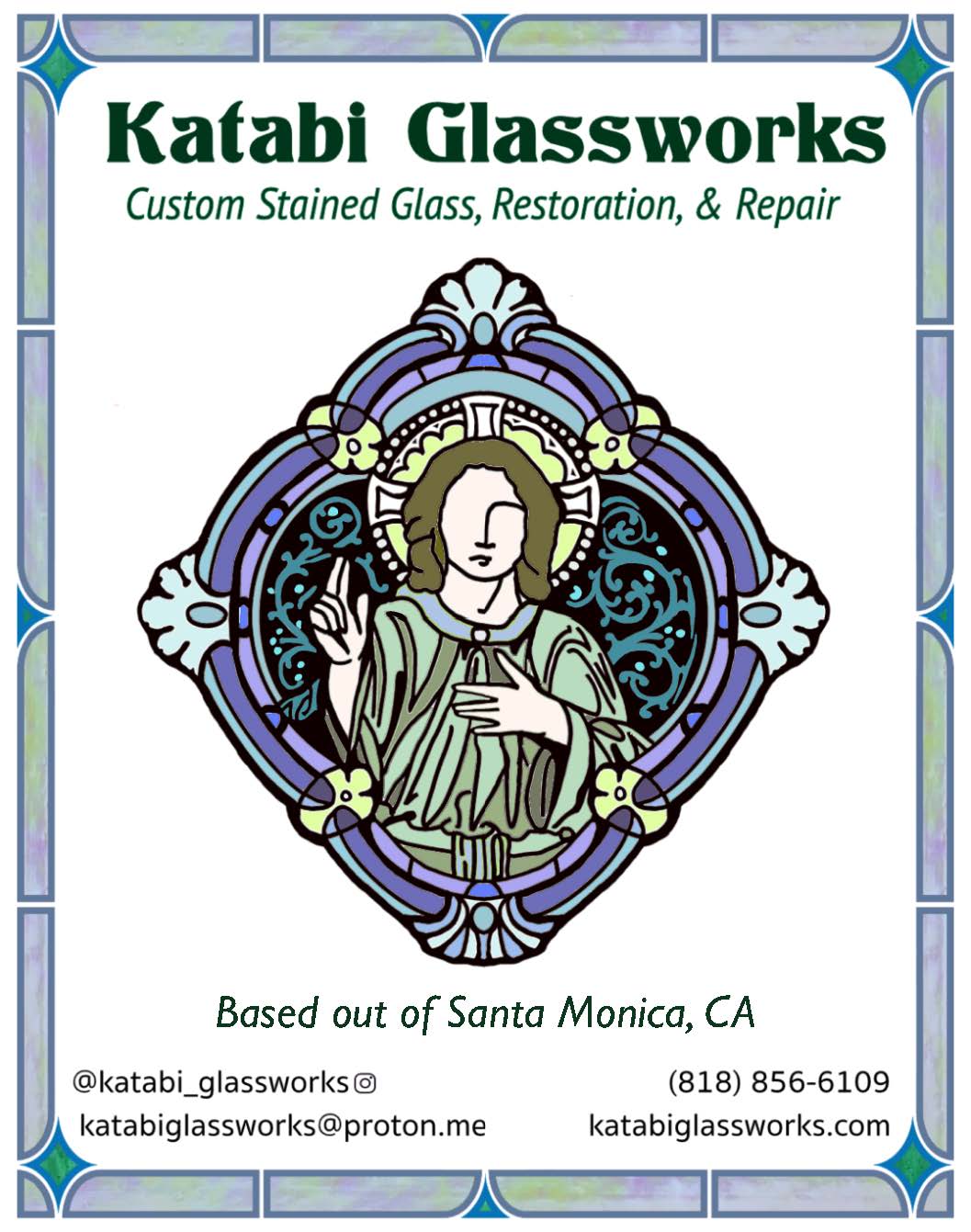Who will be the next pope? How long will the conclave last?
Those two questions are probably responsible for about 90% of conversation between members of the media that I’ve heard (or overheard) since I arrived in Rome Monday morning to cover the conclave for Angelus. But they also help explain why this conclave may be very different from past ones.
In many ways, a conclave is the perfect media event, complete with ancient rituals, a colorful cast of characters sworn to secrecy, and a theatrical, low-tech climax that keeps an enthralled international audience guessing to the very end.
In St. Peter’s Square this week, the classic reminders that a new pope is coming were easy to spot: Reporters and camera crews from as far away as Chile and the Philippines filmed stand-up reports to viewers, while TV anchors took their positions atop a three-story scaffold with St. Peter’s Basilica in the background. Red drapes have been installed on the loggia, or balcony, from which the new pope will introduce himself to the world. A newly installed chimney can be seen peeking out from the roof of the Sistine Chapel, where the cardinals will begin meeting Wednesday afternoon to elect the next pope.
But the biggest — and perhaps most unsettling — spectacle in the square has been the spotting of cardinals who, while coming and going from their daily gatherings in the Vatican’s Synod Hall, have dared to cross it wearing red.
On Monday, the color of Cardinal Ignatius Suharyo Hardjoatmodjo’s skull cap made him an appealing target as a gaggle of cell phones, cameras, and microphones followed the short, thin 74-year-old from Indonesia while crossing the square on his way to lunch.
Suharyo, who was made a cardinal by Francis in 2019, seemed to take the attention in stride, patiently answering questions in Italian, Spanish, and English while pausing to bless religious articles in between.
Asked about his desired profile of the next pope, Suharyo said he was looking for a man “with a strong spirituality” who can give the world an example of holiness.
“The world and the people will be attracted to that,” said Suharyo, who agreed there’s a need for the Catholic Church to be “closer to the faithful.”
Not even the silliest of the reporters (of which there were a few) bothered to ask Suharyo whom he might be voting for. Instead, they asked for his prediction about the length of the conclave.
“Two or three days at the most,” replied the cardinal, before turning to bless a well-wisher’s rosary.

The conventional wisdom among journalists is that a short conclave lasting a day or two (like the more recent ones that elected Pope Benedict XVI and Pope Francis) would suggest the election of one of the “frontrunners,” while a longer one stretching past Friday or Saturday suggests a more wide-open contest — and the potential election of a lesser-known “dark horse” option.
One factor that makes the outcome of the conclave so hard to predict is the makeup of the College of Cardinals, which thanks to Francis now includes more men like Suharyo who hail from the global “peripheries” and don’t spend enough time in Rome to really get to know one another.
Junno Arocho Esteves, a journalist who’s covered the Vatican for more than a decade, said that cardinals are noticeably chattier this time compared to 2013.
“Pope Francis changed the game,” explained Arocho, who worked as a Rome correspondent for Zenit and Catholic News Service and now freelances for OSV News. “Of the 133 cardinal-electors, over 100 are new cardinals, some from areas so remote or face challenges so great that these formalities are completely new to them. So naturally, while respecting the rules of secrecy, they are inclined to be open about their experiences or expectations in this conclave, many anonymously.”
Arocho also pointed out that the lack of familiarity between the cardinals means more of them depend on the press to learn about one another. Some, he said, seem to be taking a more strategic approach in handling the media by intentionally “spilling the beans” about certain areas of discussion to “provoke a response from the general public or influence those cardinals who are trying to inform themselves of the current state of affairs.”
But by Tuesday afternoon, the media-driven phase of the conclave was winding down. The cardinals had their final “General Congregation” in the Vatican in the morning, and have the rest of the day to check into the Casa Santa Marta, the Vatican guest house where they eat and sleep between voting sessions in the Sistine Chapel.
A Vatican spokesperson confirmed on Tuesday that cardinals will be required to give up cell phones before entering the conclave, and that electronic transmission systems will be deactivated behind the walls of Vatican City until the new pope is announced — whenever that will be.

